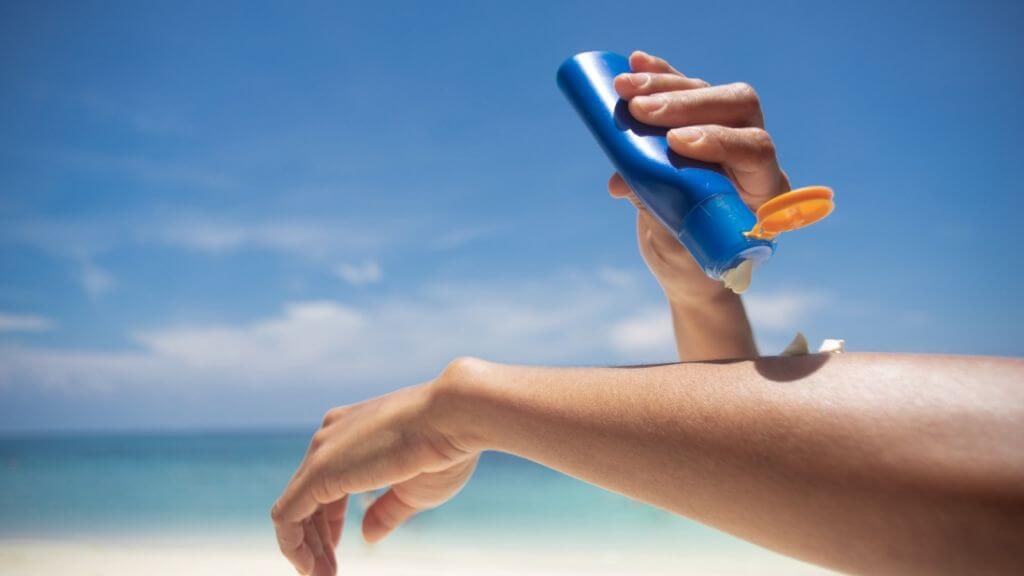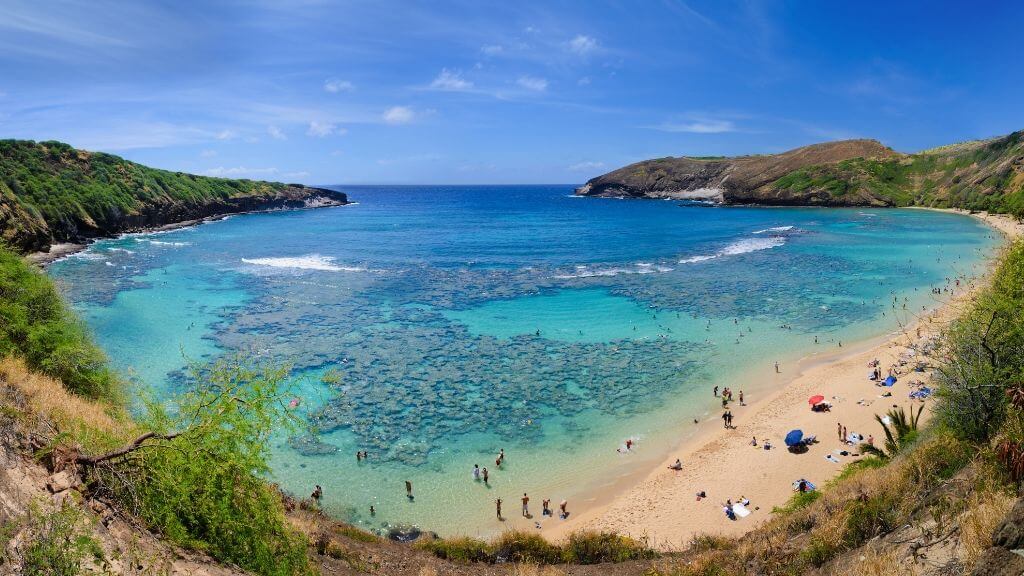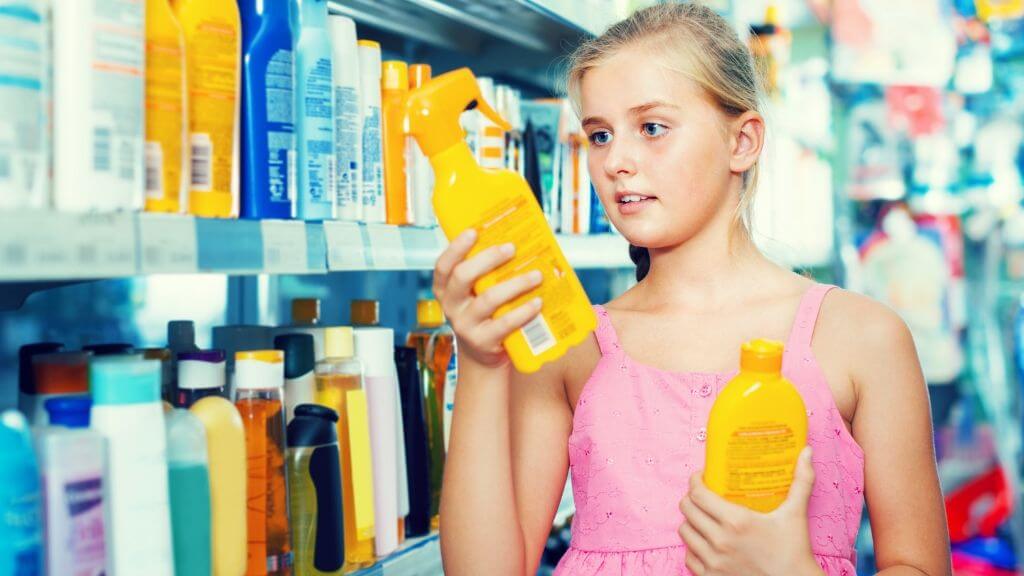5 Best Reef-Safe Sunscreen Tips to Protect Your Skin and the Oceans
7 minute read
Protecting your skin from the sun ultimately means that you’re working to save your life and protect yourself from cancer. This should never be taken lightly. Skin cancer is the most prevalent type of cancer in the United States, with more people being diagnosed with skin cancer each year than all other cancers combined.
The problem is that the sunscreen you rely on might be endangering America’s coral reefs. It’s estimated that about 25 percent of the sunscreen you apply washes off in the water within 20 minutes of entering it. Additional amounts are washed off your body when you shower, eventually filtering into wastewater that ends up in the oceans.
The Environmental Working Group (EWG) estimates that 25 to 60 million bottles worth of sunscreen chemicals wash off into coral reef areas each year.
The dying coral reefs are a serious concern for the United States. The U.S. Geological Survey (USGS) has referred to the U.S. coral reefs as imperiled national treasures and cite the alarming rate at which they’re dying. Simply changing the type of sunscreen you use when you go to the ocean can make a big difference.
Reef-Safe Sunscreens
If you’re serious about saving the coral reefs, yet still want to put your personal health at a premium, the following tips can help you find a sunscreen that will protect you without harming the reefs.

1. Avoid Oxybenzone and Octinoxate and Other Hazardous Chemicals
There are a number of chemicals in sunscreen that can harm marine life, the National Oceanic and Atmospheric Administration list them as:
♦ Oxybenzone
♦ Octinoxate
♦ Octocrylene
♦ Benzophenone-1
♦ Benzophenone-8
♦ OD-PABA
♦ 4-Methylbenzylidene camphor
♦ 3-Benzylidene camphor
♦ Nano-Titanium dioxide
♦ Nano-Zinc oxide
The top two chemicals are considered so hazardous to the reefs, that Hawaii has banned the use of sunscreens with these chemicals. The law was signed in 2018 and goes into effect in 2021, making it the first place in the world to enact such a law.

It’s no surprise that Hawaii is very concerned about its reefs. The Hawaiian coral reef ecosystem consists of 410,000 acres of living reef, home to more than 7,000 known species of marine plants and animals.
While Hawaii is a leader in this area, Key West, Florida quickly followed suit to protect the Great Florida Reef, the largest coral reef in the continental U.S. The Key West ban will prohibit the sale of sunscreens with these chemicals.
The good news for you, the sunscreen consumer, is that there are alternatives on the market, and you can still protect your skin while protecting the reefs.
2. Mineral Sunscreens
Rather than relying on harsh chemicals, opt for a mineral-based sunscreen. The National Park Service, the Association of Underwater Instructors, and the EWG recommend using mineral-based sunscreens that won’t harm the reefs.
Mineral sunscreens rely on zinc oxide and titanium dioxide as active ingredients. Rather than providing a chemical barrier, these minerals provide a physical barrier, meaning they sit on top of your skin and reflect the UV rays away.
You may find that you like the mineral sunscreens better because they don’t require your skin to absorb chemicals to be effective. Some people simply dislike this idea while others have a reaction to the chemicals on their skin. There are also some questions about breastfeeding safety with some sunscreen chemicals.

3. UPF Swimwear
Limit your amount of skin exposure by wearing Ultraviolet Protection Factor (UPF) swimwear that covers most of your body, leaving little exposed. This is a great way to protect yourself and the environment at the same time, and it works equally well in the water as it does on dry land.
| Related: Sunscreen Isn’t the Only Way to Protect Your Skin |
4. SPF 30
The SPF ratings on sunscreens can be very confusing, and they can also be misleading. SPF 30 blocks 97% of the UVB rays while SPF 50 blocks 98%, that’s a small change in protection, but it amounts to a big change in the number of chemicals you’re spreading onto your skin and releasing into the ocean.
5. Read the Label
Some sunscreens are labeled reef-safe, but this is not an indicator that they actually are reef-safe. This is not a regulated term, so there are no requirements and no proof of safety regulations. Your best bet is to learn what chemicals are known reef dangers and check the list of ingredients to see if they’re present.
The Bottom Line
Protecting yourself from skin cancer by using sunscreen is crucial to your health, and it shouldn’t be taken lightly. Unfortunately, there are some chemicals found in many sunscreens that, while protecting you, can be harmful to aquatic life and coral reefs in particular.

Opting for a sunscreen that uses mineral barrier protection, such as zinc oxide or titanium dioxide, is better for the coral reefs than sunscreens that offer chemical protection. You may also find you like them better because they're not absorbed into the skin.
Another great way to protect yourself and the ocean is to invest in UPF clothing and rash guard swimwear that gives you comfort, coverage, and protection. These clothes leave just a little exposed skin that might still need protection, so this can cut back on the amount of sunscreen in the ocean dramatically.
Being a savvy sunscreen consumer can help you protect your skin and does a lot toward protecting our ocean’s aquatic creatures.












